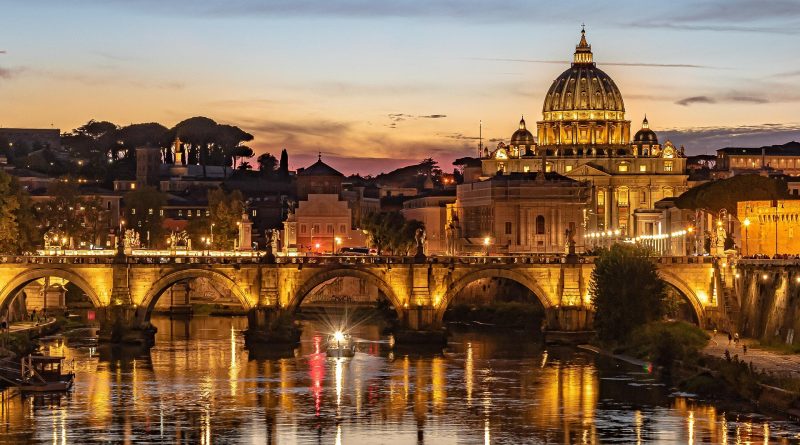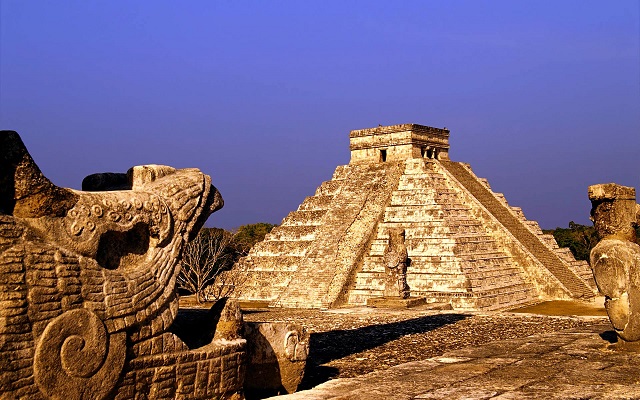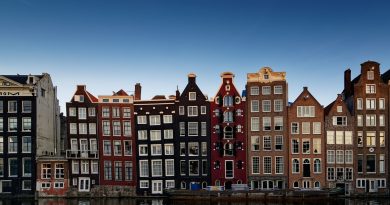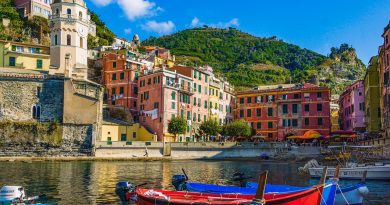Explore Rome: A Guide to the Best Attractions
Looking for the best attractions in Rome? Discover what makes the Eternal City a treasure trove of must-visit destinations with our guide!
The main tourist attractions in Rome do not change from year to year. Rome attracts tourists from all over the world every day. In today’s world not all roads lead to Rome, but the Eternal City and its best attractions invite you to take a walk.
Eternal city, open-air museum, cradle of Western civilization, city of the seven hills… Rome has received plenty of nicknames throughout its history, but nothing can describe the feeling you get when you walk through its streets and discover most romantic corners where you can enjoy its culinary culture or admire its architecture.
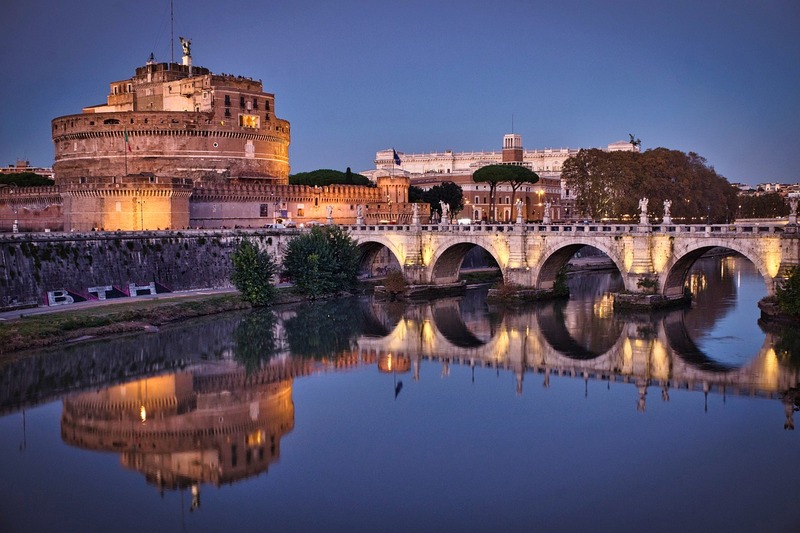
Rome is not only eternal, but infinite. Each trip leaves you wanting more to explore and discover, as it’s really not possible to capture all the beauty and history of Rome in just one visit or trip. So this list of the best things to do and best places to visit in Rome, but note that it is just a general list of places to start exploring the city.
And of course it should be noted that Rome has not only cultural value, but also good food, high fashion and a very pleasant atmosphere in the small Italian streets.
A well-planned itinerary guarantees a successful trip that will be remembered vividly. It is always better to think in advance which best place in Rome you want to visit. The number of famous historical places and architectural monuments in the Italian capital is so large that it is simply impossible to see them in one trip.
Below we give you a small list of the main historical sites in Rome that will make you fall in love with this city during your visit.
Table of Contents
Rome’s Colosseum: A Journey Through Time with Gladiators and Epic Spectacles-
The first thing that comes to mind after the words “Rome” as a most popular thing to do is the Colosseum. A beautiful Ancient Roman amphitheater, which could accommodate up to 50 thousand people, began to be built in the distant 72 BC, and finished 8 years later. It is considered a grand ancient structure. It was intended for gladiatorial fights, later used for theatrical and musical performances.
The architecture of the Colosseum is very complex, and how the ancient Romans managed to build such a thing is absolutely amazing. On the map, the structure looks like a circle.
The outer walls were made of marble, they reached a height of 48-50 m. The central arena had the following dimensions: 86 m long and 54 m wide. The thickness of the foundation is 13 m. Today, the attraction is no longer as majestic as it was. But taking a Colosseum tour, is still the top of the best things to do in Rome list.
According to statistics, it has lost almost two-thirds of its original volume. And by the way, the architecture of the Colosseum is still used in the construction of stadiums.
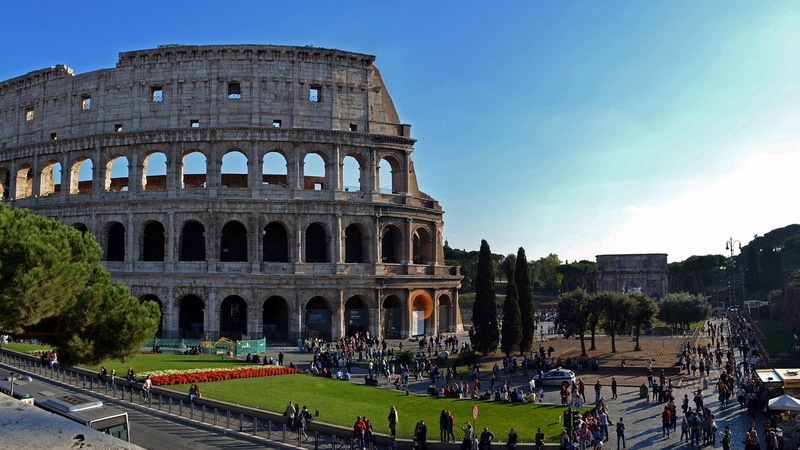
The Colosseum opens daily at 8:30. Closing takes place an hour before sunset (16:30-19:00 depending on the season).
Where: Piazza del Colosseo 1, Roma – Official Website
If it is possible to buy tickets directly at the Colosseum?
No, it is not possible to buy tickets directly at the Colosseum. Tickets must be bought in advance, either online or at an authorized ticket vendor. It is recommended to book tickets well in advance, as well known Colosseum is one of the best attractions in Rome and tickets can sell out very fast.
How to buy a ticket to the Colosseum without waiting in line?
A single ticket to visit the Colosseum, the Roman Forum and the Palatine Hill costs €12, when purchased online +2 euros for booking. You need to have time to see these three main sights of Rome within two days.
The line at the Colosseum is almost always big, so it’s better to know some tricks, because you have something else to see in Rome, except for the queue at the Colosseum ticket office. If your time in Rome is limited it is better to buy a ticket in advance.
You only need to choose the day and time of the visit, and pay for tickets online.
Time Travel at the Roman Forum: Historical Ruins and Unique Panorama
The main attractions in Rome include the ancient place in the city center with adjacent buildings. This is the Roman Forum. In ancient times, this place was originally a market. Then people’s meetings began to be held here, and there was a need to build houses, temples, arches, basilicas, etc.
The territory of the complex has expanded to 500 m2. It’s hard to say how many buildings there were in total. Of course, most of the monuments died under the influence of time and circumstances, but it is definitely worth coming here. The Roman Forum is located next to the Colosseum.
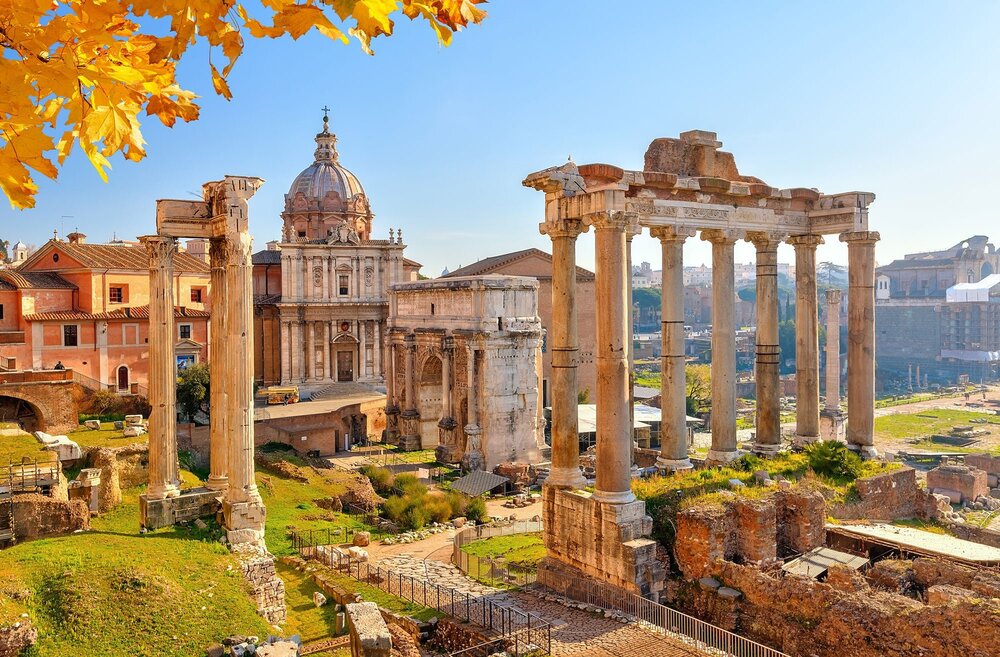
Travel tips:
- Where: Via Della Salara Vecchia 5/6 – Official website.
- Opening hours: from 08:30 to 17:00 or 17:30 (depending on the time of year).
Palatine Hill in Rome: The Seven Hills and Birthplace of an Empire
Rome is a city on seven hills. So the Palatine Hill is the central one of these hills. Its height is 40 m. It was at this place that the female wolf nursed Romulus and Remus. The founder of the Great Roman Empire, Augustus, turned the Palatine into his residence.
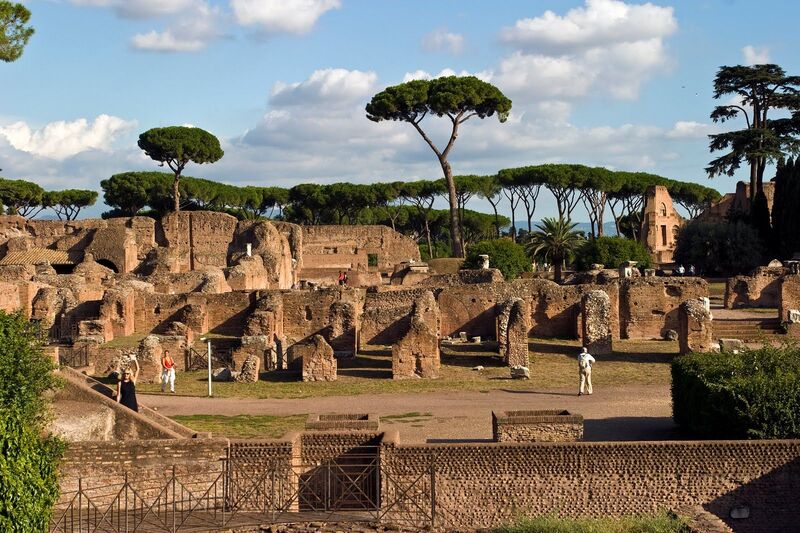
Palaces and temples were built here. Excavations are still being carried out. To visit the hill, I advise you to wear comfortable shoes, take water and a camera with you. Let me remind you that the ticket for the three main attractions in Rome is a single one.
Arch of Constantine: Monument to Victory and Marble Masterpiece
The Triumphal Arch with a height of 21 m is located between the Colosseum and the Palatine. It was erected in 315 years in honor of the victory of the Roman Emperor Constantine I by the usurper Mark Maxentius during the civil War. By the way, the only arch in Rome built for such an occasion.
Usually such monuments were erected after the victory over the external enemy. The width of the arch is almost 26 m. Depth – 7 m. It is made of marble blocks. It includes three through spans, the highest of which is the central one. Everything is covered with bas-reliefs.
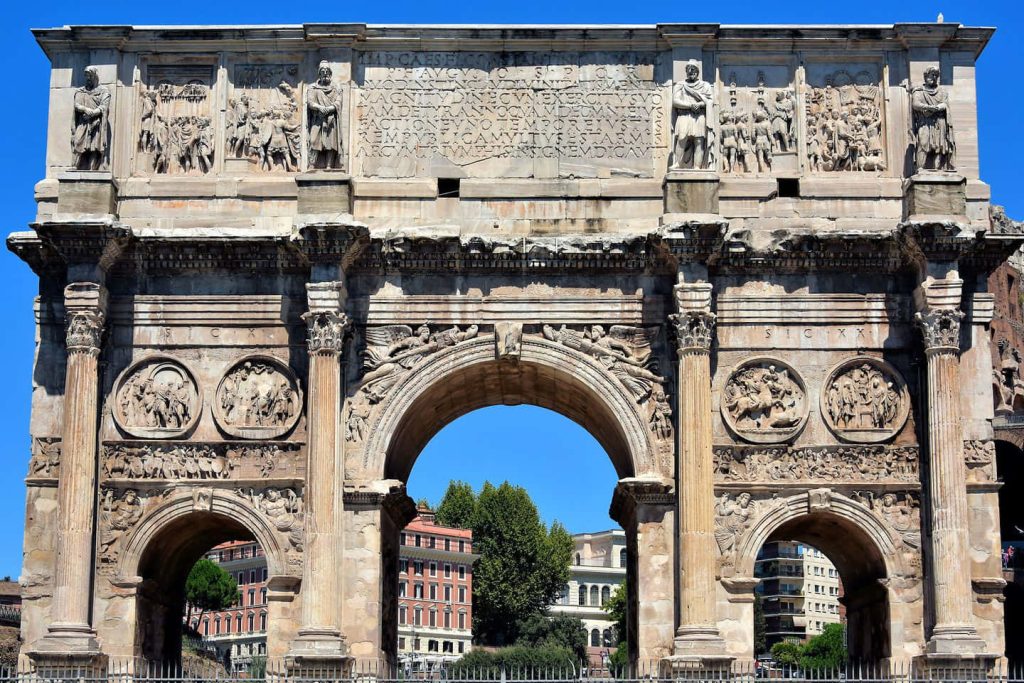
There are medallions in the lower part of the arch. They depict scenes of hunting and sacrifice. A really bright and completely free attraction.
St. Peter’s Basilica: Masterpiece of Baroque and Renaissance Architecture
The Cathedral of St. Peter is the largest Christian church in the whole world. The architects, and there were more than 10 of them, adhered to two styles – Baroque and Renaissance. More than 15 thousand believers can fit inside.
Another 60 thousand – on the square of the same name, which stretches in front of the cathedral. The facade of the church reaches a height of 48 m. It is decorated with huge (5.5 m high) statues of Jesus Christ and 11 apostles, except Peter.
Inside the cathedral is luxurious and spacious: there are many arches, statues, altars. The total length of the main room is 211 m. Entrance to the cathedral is free. But at the entrance you will find security control, as at the airport. Therefore, you can spend a couple of hours or more in the line.
Travel tips:
- Opening hours: 7:00-18:30.
- If you want to climb the dome and explore the surroundings, get ready to pay €8 (you will have to walk 551 steps) or €10 (lift to the terrace +320 steps up).
Michelangelo and Botticelli: Unveiling the Secrets of the Sistine Chapel
Vatican difently one of the best attractions in Rome to visit because as well known the former Vatican house church was built in the middle of the XV century.
Today it is used as a museum. A conclave is also held here – the election of a new pope. When the choice is made, white smoke is released over the chapel.
This is the absolute Top attractions in Rome, a magnificent example of Renaissance architecture. The walls of the chapel were decorated by Botticelli, Michelangelo, Domenico Ghirlandaio and other famous artists.
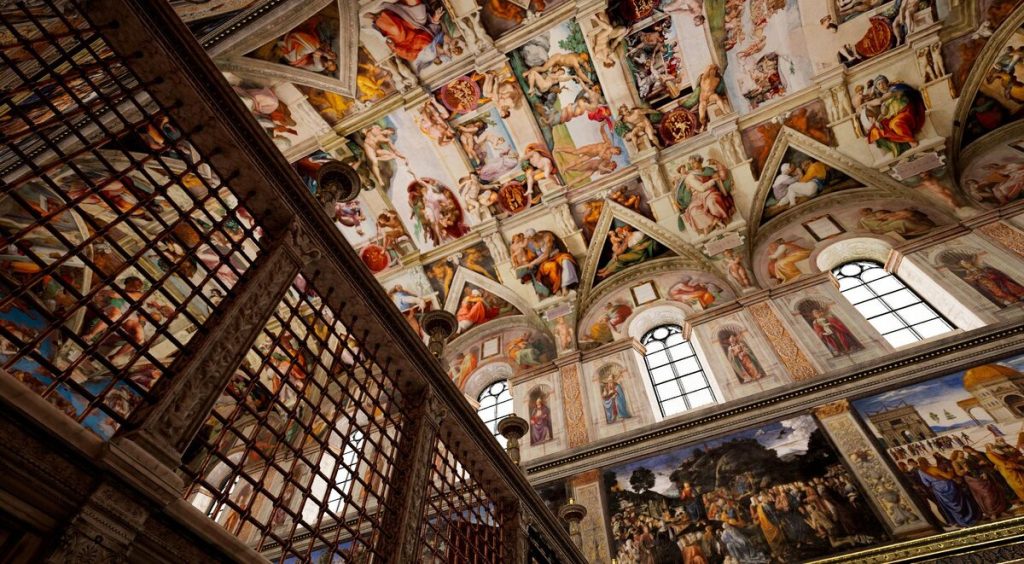
Conventionally, all frescoes are divided into two types – stories about Christ (this is the northern part of the chapel) and stories of Moses (the southern side). They have been restored several times, the last one took place in 1994. Frescoes are the main part of the collection, which can be viewed here.
The Sistine Chapel is included in the list of Vatican museums, for which a single ticket is valid. There are always huge queues to visit these attractions, we recommend buying tickets in advance online, even with a small overpayment.
Explore the Vatican Museums: A Tapestry of Art and History
The order for the foundation of the complex was given by Pope Julius II in the first half of the XVI century. Vatican museums include the Vatican Pinacoteca (art gallery), sculpture museums, the Historical Museum and, in fact, the Sistine Chapel. More than 6 million tourists visit them annually.
Museums are scattered all over the Vatican, not even a week will be enough to see all the exhibits. We advise you to think over the route of independent travel. It is difficult to single out any one of these architectural monuments, each of them is special.
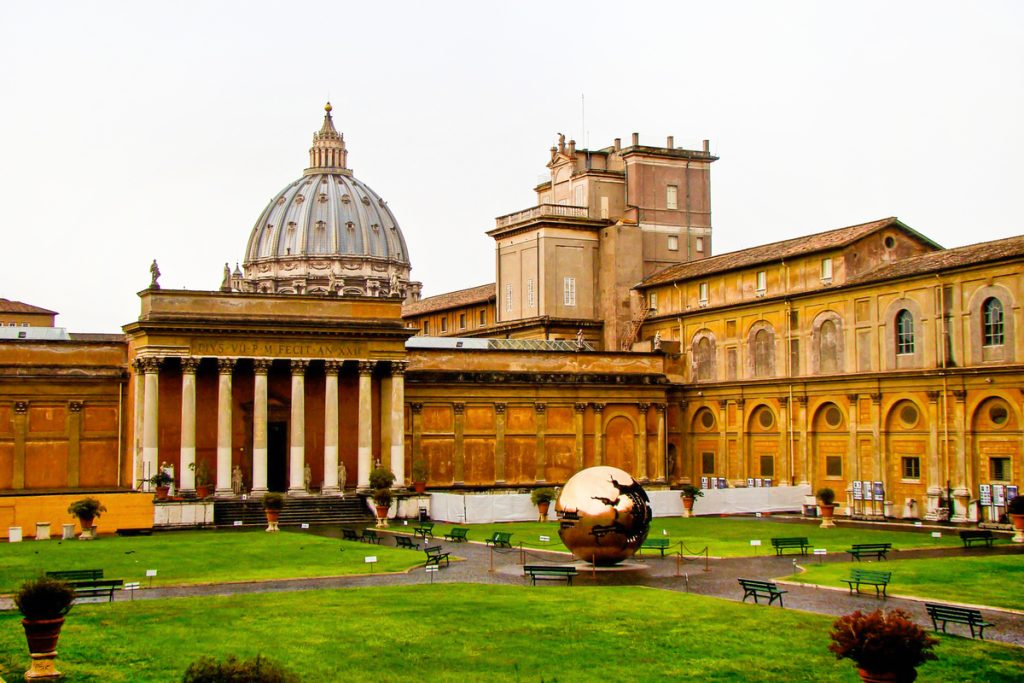
If you have limited time in the Vatican, then postpone visiting museums for the next time. In the meantime, just enjoy the view of the square, and… sign the postcards.
By the way, it’s cheaper to buy postcards on the way to the Vatican in Chinese shops (yes, yes, like all over the world, it’s cheaper to buy souvenirs unless they are, of course, unique in Chinese shops).
In case if you don’t have time, then you can buy them directly at the Vatican post office along with stamps.
Travel tips:
- The ticket, as have already said, is the same for museums and chapels. Come every day, except Sunday, from 9:30 to 18:00.
- Website: for more tourist info please visit the Official Website.
Piazza Navona in Rome: From Ancient Agons to Modern Marvels
A beautiful square, one of the 10 must see places in Rome, was erected by order of Gaius Julius Caesar. The architectural style is Baroque. It looks like an elongated rectangle on the map. The name came from the ancient competitions – agons. In ancient times, they were constantly held here.
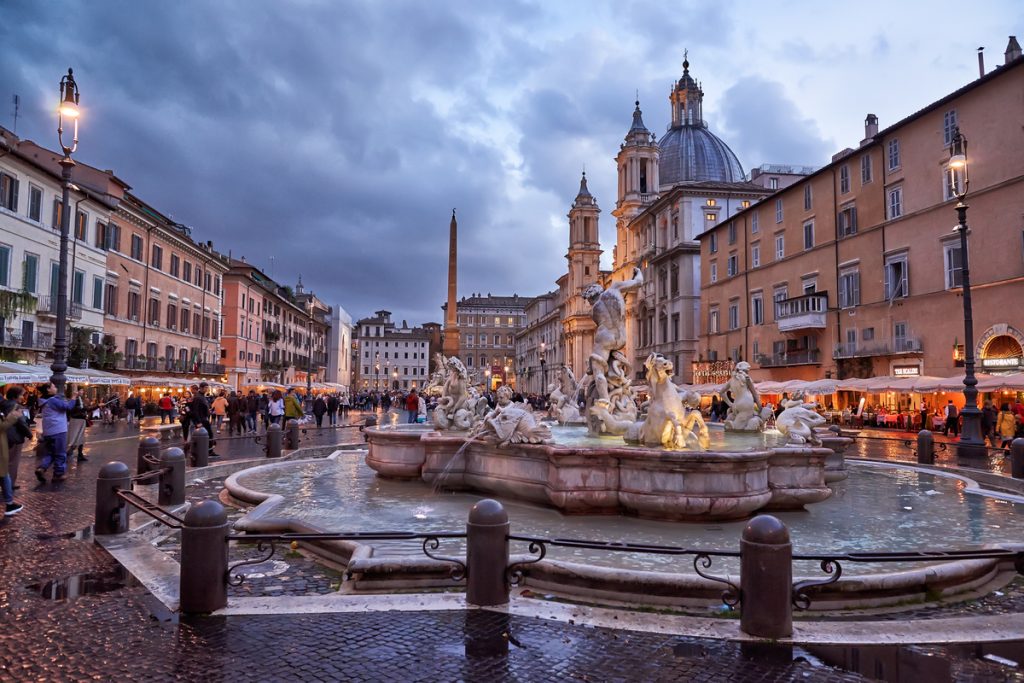
Since the XV century, the square has served as the main city market. Later, equestrian competitions and carnival processions were organized on it. Today you can see two magnificent architectural monuments here – the Fountain of Four Rivers and the Church of St. Agnes.
Fountain of Four Rivers: Bernini’s Majestic Ode to Nature
According to many historians, this is one of the best architectural works of the incomparable Giovanni Bernini. The date of foundation is 1640. The architect’s idea is simple, but no less majestic. The fountain is a huge marble bath, in the center of which there are sculptures of the gods of the four rivers. These are the Nile, the Danube, the Ganges, La Plata.
The gods are complemented by seven powerful animals (horse, lion, dolphin, land and water serpent, crocodile, dragon) and one dove crowning the obelisk. Bernini wanted to reproduce in one project all the components of nature – powerful higher beings, animals, birds, a magnificent landscape.
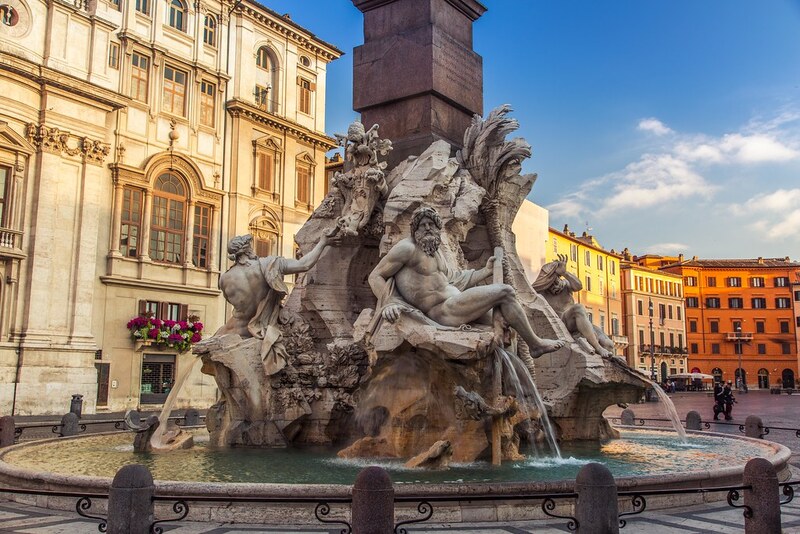
The landmark owes its modern appearance to the architect Giuseppe Valadier. Previously, public executions were held here. In the center of the square today there is an Egyptian obelisk, fountains of Neptune and Roma. Nearby there are shops, cafes, night and hotel complexes. Automobile traffic is prohibited.
Art and Architecture at Santa Maria del Popolo: A Spiritual Retreat in Rome
The main church of the Augustinian Order is located in the capital of Italy. It was built in the middle of the XV century in the architectural style of the Renaissance. The same talented Bernini worked on the interior. Of particular interest are the Chigi and Cherasi chapels.
The walls of the first chapel were painted by Raphael, paintings by Sebastiano del Piombo hang near the altar.
The painting of the second chapel, Cherasi, was done by Carracci and Caravaggio. Come and admire all this splendor every day from 7:30 to 19:30. Admission is free.
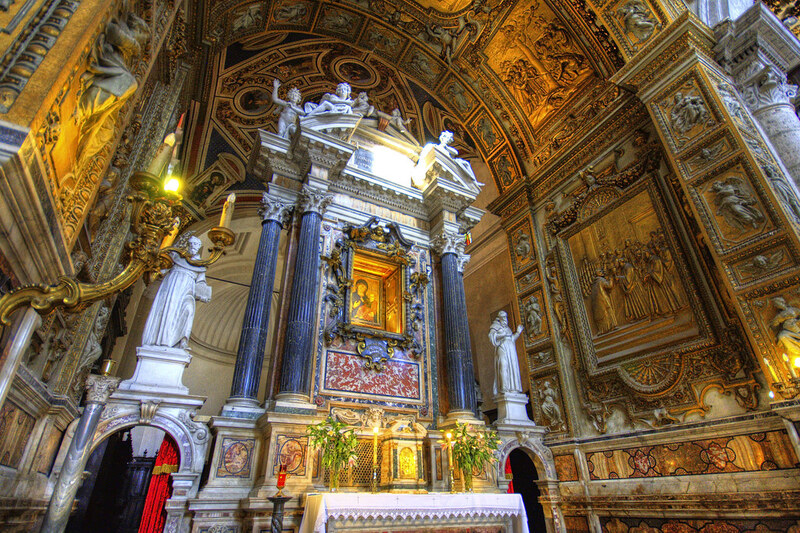
It is located on the square of the same name to the north of the Colosseum. It was built in the Baroque architectural style in the middle of the XVIII century. The author of the project is Nicolo Salvi. It is into him, according to tradition, that you need to throw a coin to return to Rome again. This fountain was “filmed” in many famous.
Spanish Steps: Baroque Beauty in Rome
138 exquisite Baroque steps leading from the Spanish Square to the top of the Pincho Hill are the original attraction of the city. It is considered the most beautiful staircase in Europe. The order for the construction was given by Cardinal Mazarin.
Thousands of workers have been working on the project for more than 2 years. Since ancient times, it has been customary to decorate the staircase with flowers. This is a favorite place for dating and walking.
World–famous brands – Dior, Prada, Dolce & Gabbana – have marked their fashion houses in two steps.
In May, the staircase is decorated with fresh flowers and it becomes even more beautiful. The Spanish steps are part of the route of many Roman photo walks.
Why it is prohibited to sit in Spanish Steps?
Unfortunately, it has recently been forbidden to sit on the steps of the Spanish Steps.
In 2019, it was banned from sitting on the Spanish steps in Rome, Italy. The reason for this is that many tourists sitting on the steps wear out over time and damage the steps.
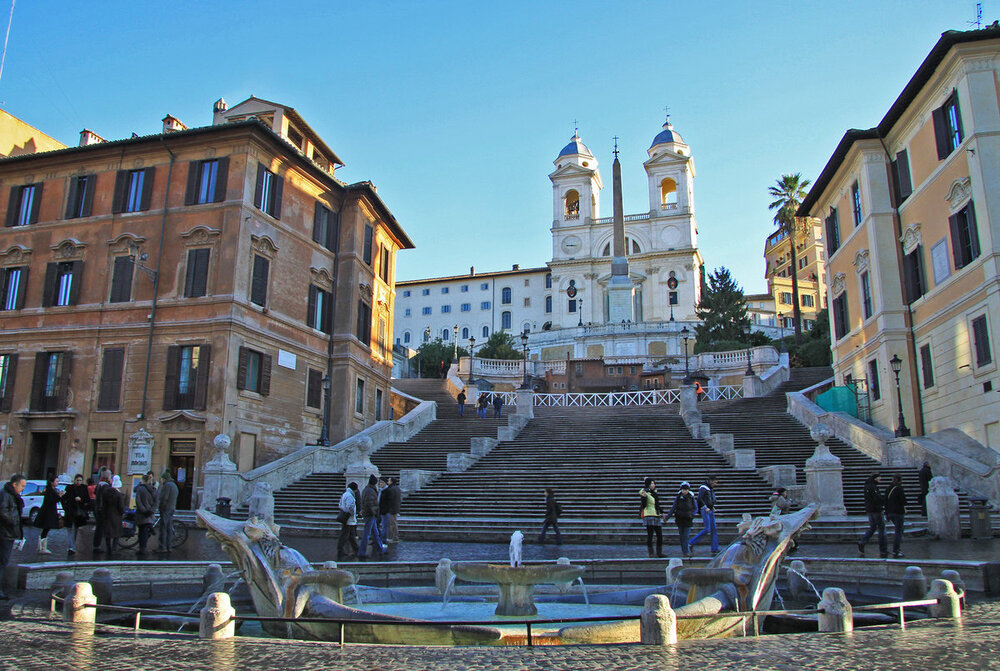
The Italian government has decided to implement a new law prohibiting sitting on the steps in order to protect the stairs and pass it on to future generations. This restriction is also to improve the safety and accessibility of the steps, as large numbers of people sitting on the steps can be dangerous to pedestrians and people there is an emergency.
It is also seen as a way to promote responsible tourism and encourage tourists to see historical and cultural heritage.
Santa Maria Maggiore: Art, Architecture, and Eternity
This is one of the four main Roman basilicas, the temple of the highest rank. The construction was carried out for many years and was completed only in 1750. Bernini, Pope Pius V, Napoleon Bonaparte’s sister Pauline and many other famous personalities found eternal rest here.
The interior of the basilica looks luxurious. The walls are decorated with magnificent works of art, many precious stones and floor ornaments of the XIII century. A museum has been opened under the temple, including 8 halls and in it you can learn about the history of Santa Maria Maggiore.
It works daily from 9:30 to 18:30. The basilica itself is open from 7:00 to 19:00. Admission is free.

Pantheon: The Majestic Temple of All the Gods in Rome
This is the “temple of all the gods”, founded in the second century. It stands in the IX district of the capital. It is another big structure. In fact, it is a large rotunda (cylindrical building) with a dome reaching a diameter of 45 m.
The height of the Pantheon itself is 42 m . There are no windows here, the perimeter used to be decorated with statues of gods. Today they are replaced by sculptures of famous Italian masters.
Many famous personalities are buried in the Pantheon – the painter Raphael, the sculptor Michelangelo Buanarroti, the second king of Italy Umberto I.
The main entrance is decorated with 16 granite columns. By the way, a wedding ceremony can be held on the territory, many consider it very romantic. Entrance to the temple is free but you must wait on the line to Skip the Line you can get your ticket here. Visiting hours: every day from 9:00 to 19:00.
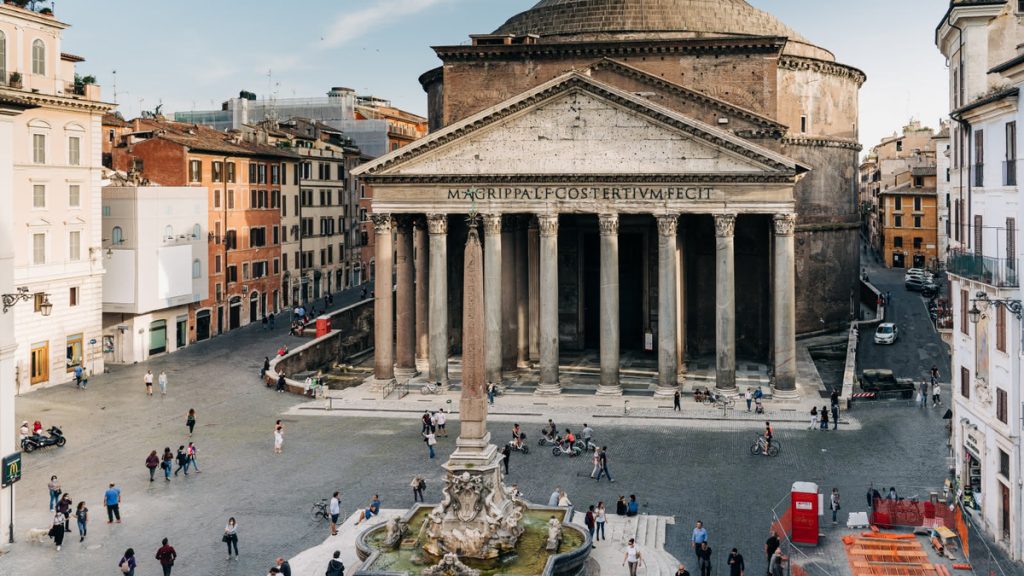
Piazza Venezia: The Heartbeat of Rome’s Historic Center
Piazza Venezia is located in the center of Rome, at the foot of the Capitoline Hill. The Embassy of the Republic of Venice used to stand here. And today people come here to see the magnificent Vittoriano monument, built in honor of the first king of Italy.
It traces elements of ancient Roman architecture and classical style. In the center of the monument is an equestrian statue of the king. It is lavishly decorated with columns, bas-reliefs, and other patterns. It looks pompous.
Locals often call the monument “Wedding Cake”, and this is by no means a compliment. Whatever it was, Vittoriano is rightfully included in the list of “Interesting sights of Rome”.
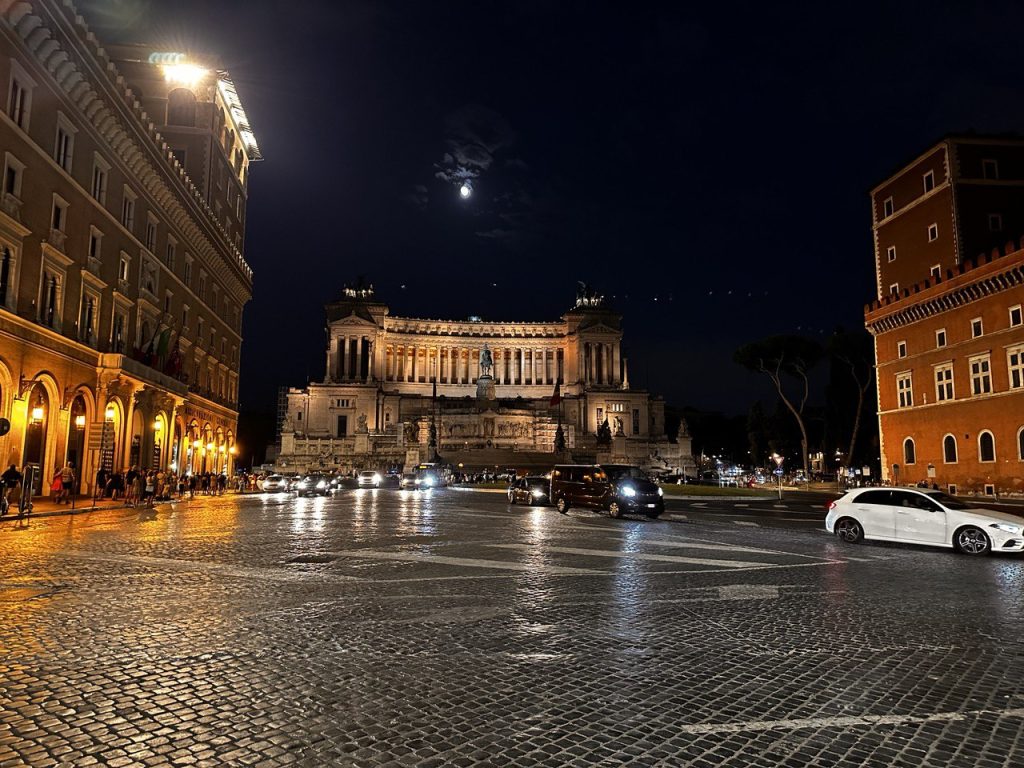
Entrance Fee and Opening Hours: Visiting Castel Sant’Angelo
Another name is Hadrian’s Mausoleum. This is an ancient Roman architectural monument on the coast of the Tiber River, made of expensive marble. The castle was the last refuge for the Roman emperors, a dungeon, a fort, the residence of the clergy.
Today it is a treasury and a beautiful museum. Here you can explore the hall with jewels, rare books and documents in the Secret Archive, the apartments of Pope Alexander VI – more than 50 rooms in total.
You can visit daily from 9:00 to 18:30. For the entrance ticket, prepare from €14.
Address: Lungotevere Castello, 50 00193 Roma
Contacts: Phone. +39 066819111 Official Website.
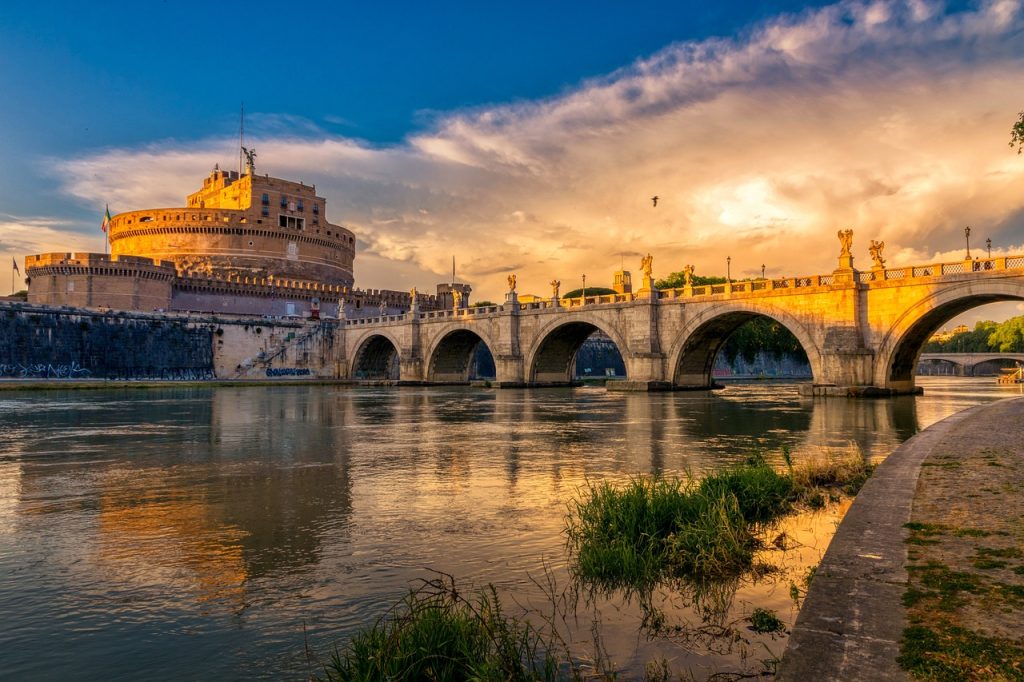
Immerse Yourself in Rome’s Beauty: A Vacation Like No Other
As well known Rome is an Eternal City with a rich history, culture and beauty. With its rich heritage and iconic landmarks, there are endless opportunities for exploration and discovery in every visit. From the ancient ruins of the Colosseum and the Roman Forum to the breathtaking art and architecture of the Vatican, Rome offers something for everyone.
In this article we mentioned only 15 places to visit but Rome offers a lot of places to visit and we are sure Rome is a place where you would loke to come again. Whether you are a lover of history, art or just want to explore the beauty and charm of this magnificent city. Rome is a place that will leave you enchanted.
So you can pack your bags and get ready to immerse yourself in the wonders of Rome – you will be impressed and your vacation will be unforgettable!
Read also : Discover the Best Time to Explore Italy’s Beauty
